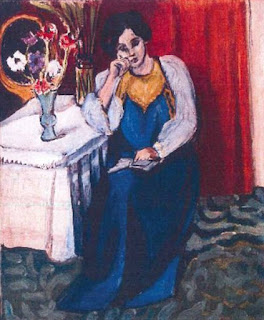Sunday, March 10, 2013 -  art forgery,England,Jonathon Keats,Krieghoff,Tom Keating
art forgery,England,Jonathon Keats,Krieghoff,Tom Keating
 No comments
No comments
 art forgery,England,Jonathon Keats,Krieghoff,Tom Keating
art forgery,England,Jonathon Keats,Krieghoff,Tom Keating
 No comments
No comments
Jonathan Keat's FORGED: What Is Culture? Tom Keating (1917-1984)
The artist who copyrighted his mind in 2003, Jonathan Keats, questions
the concept of originality in his new book, FORGED: Why Fakes Are the
Great Art of Our Age (December 2012, Oxford University Press).
What is Culture? Tom Keating (1917-1984)
In 1982, British
national television showed Tom Keating demonstrating how he painted in the
style of masters such as Titian and Rembrandt. In his 1977 autobiography The Fake’s Progress, Keating, a former
housepainter who had worked for art restorers, declared the use of inferior
materials (“recklessness”) such as acrylics in ‘oil paintings’ indicated that
his pictures in the style of great masters were never meant to fool the serious
art market.
Rather
than scraping down the old potboilers he bought in junk shops, he simply
cleaned them with alcohol and reprimed them with a layer of rabbit-skin glue.
He painted directly onto this surface, often in acrylics, sometimes brushing on
a layer of darkening varnish before the paint cured. The results were
predictably catastrophic. Even if his synthetic pigments were never detected by
scientific testing, the paint would start to peel in a few decades, betraying
his ruse.
Keating allegedly forged the work of Cornelius Krieghoff, a Dutch
artist of the 19th century famous for his Canadian landscapes. Keats
writes:
A
Dutch artist working in Quebec City in the 1850s, Krieghoff produced thousands
of diminutive farm and tavern scenes, many of which were bought as souvenirs by
British soldiers. Historians came to value them for their detailed documentation
of Canadian customs. Collectors coveted them for their decorative charm.
Dealers delighted in their escalating prices, reaching into the thousands of
pounds by the 1950s. Keating appreciated them for Krieghoff’s skillful
depiction of “jolly little Brueghelesque figures” and for the fact that
Krieghoff “did so many versions of the same picture” – to which hundreds more
could and would be added over the following decade.
In the early 1950s,
Keating sold forgeries through junk shops in south London, then through country
auctions in Scotland where he worked ‘restoring the trifling art collections of
minor Highlands castles’, then on to counterfeiting paintings by artists such
as Degas, Goya and Samuel Palmer whom he claimed possessed him and used him to
create more artworks long after their deaths. A Times of London correspondent,
Geraldine Norman, began unraveling the forgeries of Keating in 1970 but didn’t
publish until 1976. Once confronted, Keating immediately confessed:
Alluding
to the full scope of his forgery, he declared that money was not his
incentive. “I flooded the market
with the ‘work’ of Palmer and many others, not for gain (I hope I am no
materialist) but simply as a protest against the merchants who make capital out
of those I am proud to call my brother artists, both living and dead.”
International headlines
followed Keating, along with a book-deal to be ‘ghost-written’ by Norman’s
husband, Frank, a petty-thief-turned-playwright. However, at Keating’s
three-week trial ended when he fell ill and the prosecutor dropped the case.
Keating recovered and became a celebrity after forging works for more than two
decades in 12 television episodes before he died of heart failure.








